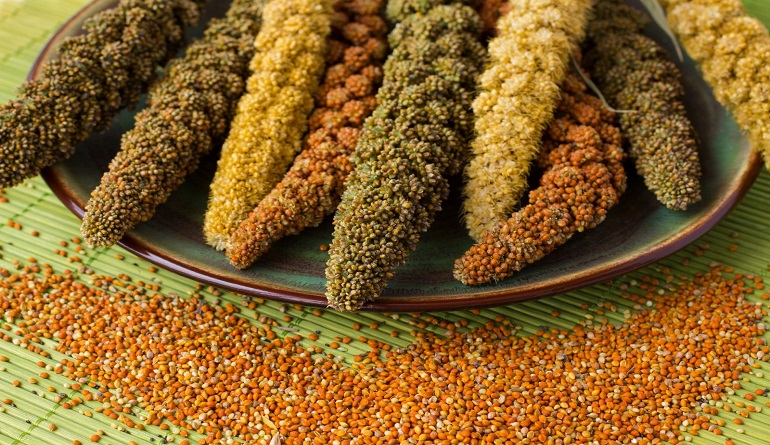
ATM News Network: The United Nations declared 2023 as the International Year of millets, the central and state governments have been actively working to increase the area and production of millets in the country. Millets campaign is being implemented in states under Shree Anna Scheme. Under this, farmers are being encouraged to buy millets which are considered as a nutritious crop by providing subsidy on inputs.
The area under food grains in the country has increased from 38.37 lakh hectares to 41.34 lakh hectares in 2022. If the government buys food grains at the base price, the area, production and income of the farmers will increase rapidly. Because the cost of growing millets is low. It does not require much care, it is easy to grow. According to Prime Minister Narendra Modi, the International Year of millets campaign will increase the income of 25 million small and marginal millet farmers in the country, thereby strengthening the rural economy.
India is the largest producer of millets. The country is enriched with a wide range of millets produced in major millets producing states like Madhya Pradesh, Rajasthan, Maharashtra, Karnataka, Andhra Pradesh etc. At present about 50 million (500 lakh tonnes) of coarse grains are produced in India. India accounts for about 80 percent of Asia's and 20 percent of the world's millets production. Cultivation of millets requires less labour and less water. Only 25-30 percent of India's total agricultural land is irrigated or semi-irrigated. When the demand for food grains increases, its price in the market will increase. Only then the income of the small farmers without agriculture will also increase.
Export of food grains
At present, most of the millets like Ragi, sorghum, and sorghum are exported from the country. These millets are exported to America, England, Nepal, Saudi Arabia, Yemen, Libya, Tunisia, Oman and Egypt. India's millets exports to reach $64 million in 2021-22. India exports millets to 139 countries worldwide. Apeda has sought to reach out globally by implementing a robust strategy to expand into cereals and its value-added products to achieve a target of $100 million by 2025.
Shri Anna Scheme
Millets are also being promoted in the Union Budget. Nowadays almost every person is suffering from some kind of disease. But in ancient India, people rarely got sick. The main reason for this is that earlier people used to eat millets. Millets are more nutritious than wheat and rice. The Central Government is organizing several programs under the International Year of millets 2023. On the other hand, the state government is providing technical and financial support to the farmers to increase the production of food grains.
In many states, subsidies are being received for agricultural inputs on the lines of millets campaigns, while in some states farmers are being trained and linked to cereal processing. On the same lines, Madhya Pradesh government is also giving subsidy to the farmers for the promotion of Shri Anna under the State Trindhanya Abhiyan Yojana. The government has budgeted Rs 23.25 crore for the Madhya Pradesh State millets Campaign for 2 years.
Centre’s efforts to popularize millets
The central government has increased the target of procurement of food grains in the central stock. The target for 2021 was 6.5 lakh tonnes. It was increased by 1.3 million tonnes for 2022. In the kharif season till November, the purchase of toor has exceeded the target. The 'Nutritious Food Campaign' scheme under the National Food Security Mission will be implemented in 212 districts of 14 major food grain producing states of the country. Under this scheme, millets farmers will be informed about better seed varieties, improved cultivation methods, crop protection measures and proper methods of storage and processing of the produce.
Cultivation of millets
Farmers in Maharashtra, Chhattisgarh, Rajasthan, Madhya Pradesh, Uttar Pradesh, Haryana, Gujarat, Jharkhand, Tamil Nadu, Andhra Pradesh, Karnataka and Telangana cultivate millets extensively. At the same time, the highest consumption of millets is in Assam and Bihar. This year, the area under food grains in the country has increased from 38.37 lakh hectares to 41.34 lakh hectares.
Thus if India becomes a global centre in food grain production, exports of agricultural produce will increase. The increase in exports will have a positive impact on the country's economy, as well as a revolutionary increase in farmers' income. According to a report, over 500 startups have been working on food-related ventures in the country in the last few years. Along with this, employment opportunities will also increase.